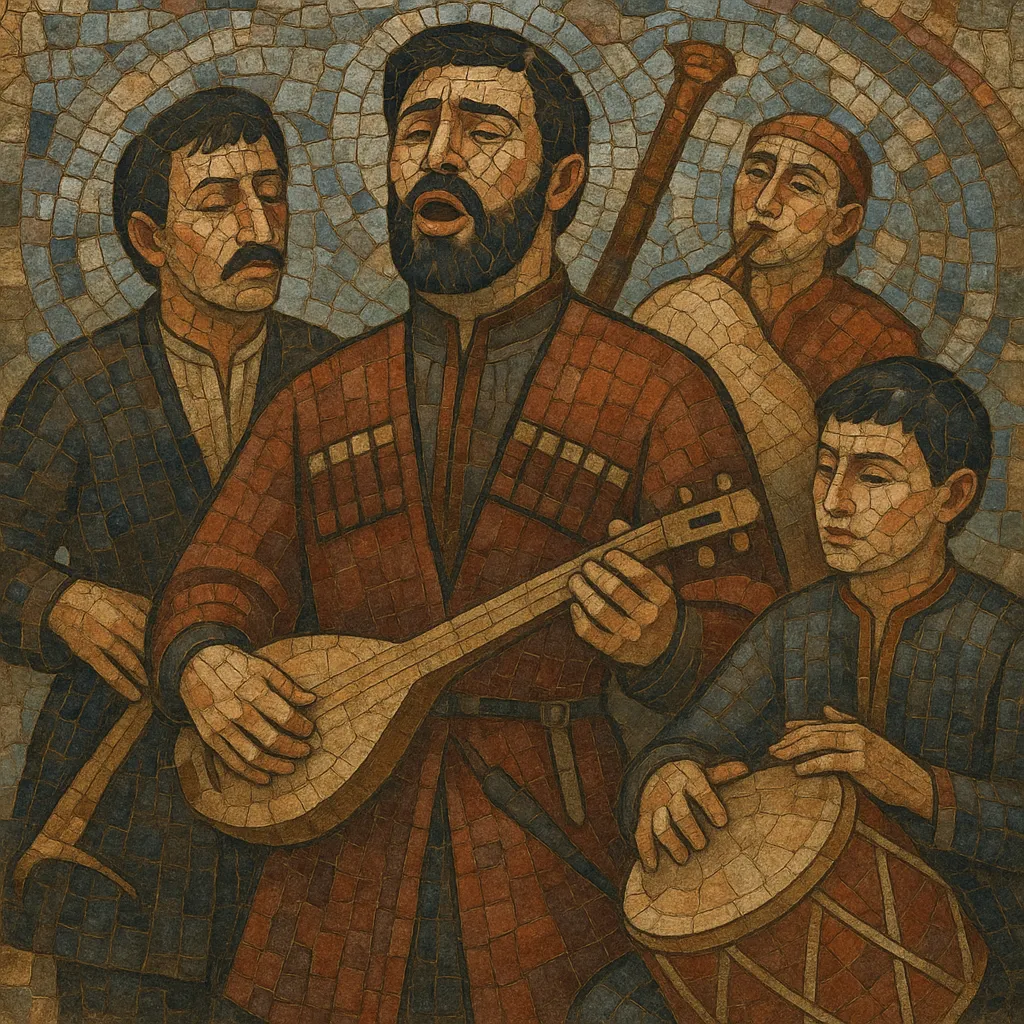Georgian folk music is an ancient, predominantly vocal tradition best known for its striking three-part polyphony, drones, and bold dissonances. Voices often move in parallel fourths and fifths, cadence on open intervals, and lean into seconds that resolve with a characteristic Georgian bite. Regional styles vary widely, from the intricate, yodel-like krimanchuli of Guria to the archaic, close-harmony textures of Svaneti and the broader, melismatic lines of the eastern Kartli-Kakheti school.
While much of the repertoire is unaccompanied, instruments such as the panduri (three‑string lute, East), chonguri (four‑string lute, West), chuniri (bowed lute, Svaneti), salamuri (flute), chiboni (bagpipe), duduki (double-reed), and doli (drum) appear in dance and regional song genres. Themes span toasts, work songs (naduri), seasonal carols (alilo), laments, epic narratives, and wedding music. Georgian polyphonic singing is inscribed by UNESCO as Intangible Cultural Heritage, reflecting its unique modal language, performance practice, and deep social function.
Georgian folk music predates written sources, but evidence for its distinct polyphony appears as early as the medieval period (by the 12th century). The idiom likely synthesizes pre-Christian ritual song with later regional practices, developing a uniquely Georgian approach to multipart singing that is independent of, though historically parallel to, ecclesiastical chant.
By the early modern era, strong regional schools had emerged:
• East (Kartli–Kakheti): expansive melodies over sustained drones, with modal inflections and melisma. • West (Guria, Samegrelo, Imereti, Adjara): dense contrapuntal textures; Guria is famed for krimanchuli (a virtuosic, yodel-like upper part). • North/Highlands (Svaneti, Racha-Lechkhumi): archaic, narrow-range harmonies with parallel motion and stark open intervals.These traditions underpin social rites (weddings, feasts, field work), seasonal rituals (alilo carols), and dances (e.g., Khorumi, Kartuli), often in asymmetric meters.
From the late 19th century onward, collectors and ethnographers documented regional repertoires, and early recordings captured Gurian and Kakhetian styles on shellac. In the Soviet era, state-supported ensembles professionalized and popularized the sound (notably the Rustavi Ensemble from 1968), standardizing staging while preserving core polyphonic techniques.
Georgian polyphonic singing was recognized by UNESCO (Masterpiece list in 2001; Intangible Cultural Heritage in 2008). Since the 1990s, a vibrant revival has emphasized village lineages and historically informed vocal timbres. Contemporary ensembles (Basiani, Mtiebi, Didgori, Zedashe, Shavnabada, Anchiskhati) balance concert presentation with field-based authenticity, and global collaborations have brought Georgian polyphony into world music, choral, and academic contexts.


